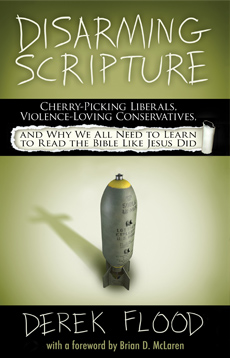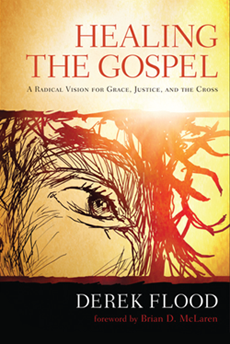Temple Sacrifice Pt 3
Friday, August 25, 2006
In the previous installements I've tried to explore how we might understand the Temple Scarifices by understanding mor about the culture they came out of and the meanings they connected to them. We need to keep in mind though that it is vital to understand the meaning and drama behind the Sacrifices rather than their functional mechanics. Being a part of the actual experience of the drama of temple sacrifice effected a person much more deeply that any explanation that can be given for it. In the same way, the crucifixion story can effect and move a person in a way that mere explanations of the atonement cannot. In watching Jesus carry that cross through spit and mud, in seeing the nail scarred hands, we become involved in his story, understanding it on a level that is often outside of our words to express.
Story and ritual have an ability to immerse and involve a person that no analysis can capture. In trying to understand the rites of a culture long ago, it can be helpful to explain the meanings and motivations of the sacrifices; but at their core, they were likely understood in the wordless language of drama, just as we today connect to both ritual and story on a gut level. We are moved by it, but do not have words. No amount of musical theory can explain why a Bach recital will move a person to tears, or for that matter what it it's like to be in the middle of a mosh pit at punk rock concert. To truly understand we need to be immersed in it. Understood in this way, the ritual of Sacrifice enacted the drama of re-connection. It was more than anything understood on a gut level, not on a mechanical one.
The drama of the Temple Sacrifices - like all story - spoke to people a the core of who they were. It acted out the profound longing in the worshiper for connection. The book of Hebrews tells us that the temple sacrifice was a “copy and shadow of what is in heaven” (Heb 8:5). The true picture is found in Christ who is both the perfect mediator, and the perfect sacrifice. In other words, the reality that the story of the sacrifices pointed to was the cross. The cross is, in the words of C.S. Lewis “a myth which is also a fact” that myth - meaning a story that defines us as people - has “come down from the heaven of legend and imagination to the earth of history”. The story of our deepest yearnings rooted in the reality of who we are, came and lived among us, died on a cross, and rose again. The temple sacrifices were an earthly symbol for the heavenly reality enacted on the cross. God in Christ takes our place, does what we could not do, breaks us out of the grip of guilt, and makes our hearts clean again.
As much as we can try to understand the Temple Sacrifices, the fact remains that it is still pretty upsetting to think about. Perhaps this gut reaction we have tells us something important. Quite plainly, we are reminded in Hebrews that in the temple sacrifice a real animal was slaughtered and died. In the same way, the fact of the crucifixion was that Jesus really died a horrific death. We should be wary of any theory of the cross that makes the death of Jesus either “self-evident” (like a rational legal theory can), or “romanticizes” the crucifixion into palatable and noble metaphors (as a Christus Victor theory can). Any metaphors and meaning we might see in the cross are not abstract images, but refer to the real and bloody death of Jesus on the cross. Yes it was necessary, and yes it is about God's love, but it also is a shock. When we today find the idea of animal sacrifice to be something shocking and primitive, this is in fact exactly the reaction Paul describes to his preaching of the crucified Christ by both Jews and Greeks who saw the cross as “a stumbling block” and “foolishness”.
The cross as practised by Rome was by no means a symbol of the “fulfilment of justice”, it was a symbol of great shame and failure. If we want to understand the cross, that is where we need to begin – in its shame and failure. The cross was to the people of Jesus' time something horrific, and one cannot get around that by trying to frame it in detached legal terms that call a scandal “reasonable”. Likewise, as much as we may be tempted to have a “bloodless cross” and only focus on God's love and good news, this we also must not do. Life begins at the cross. One must face its horror dead on, one must have the courage to look at its ugliness and at our own ugliness. There, in the shadow of the cross, we will find life.
Story and ritual have an ability to immerse and involve a person that no analysis can capture. In trying to understand the rites of a culture long ago, it can be helpful to explain the meanings and motivations of the sacrifices; but at their core, they were likely understood in the wordless language of drama, just as we today connect to both ritual and story on a gut level. We are moved by it, but do not have words. No amount of musical theory can explain why a Bach recital will move a person to tears, or for that matter what it it's like to be in the middle of a mosh pit at punk rock concert. To truly understand we need to be immersed in it. Understood in this way, the ritual of Sacrifice enacted the drama of re-connection. It was more than anything understood on a gut level, not on a mechanical one.
The drama of the Temple Sacrifices - like all story - spoke to people a the core of who they were. It acted out the profound longing in the worshiper for connection. The book of Hebrews tells us that the temple sacrifice was a “copy and shadow of what is in heaven” (Heb 8:5). The true picture is found in Christ who is both the perfect mediator, and the perfect sacrifice. In other words, the reality that the story of the sacrifices pointed to was the cross. The cross is, in the words of C.S. Lewis “a myth which is also a fact” that myth - meaning a story that defines us as people - has “come down from the heaven of legend and imagination to the earth of history”. The story of our deepest yearnings rooted in the reality of who we are, came and lived among us, died on a cross, and rose again. The temple sacrifices were an earthly symbol for the heavenly reality enacted on the cross. God in Christ takes our place, does what we could not do, breaks us out of the grip of guilt, and makes our hearts clean again.
As much as we can try to understand the Temple Sacrifices, the fact remains that it is still pretty upsetting to think about. Perhaps this gut reaction we have tells us something important. Quite plainly, we are reminded in Hebrews that in the temple sacrifice a real animal was slaughtered and died. In the same way, the fact of the crucifixion was that Jesus really died a horrific death. We should be wary of any theory of the cross that makes the death of Jesus either “self-evident” (like a rational legal theory can), or “romanticizes” the crucifixion into palatable and noble metaphors (as a Christus Victor theory can). Any metaphors and meaning we might see in the cross are not abstract images, but refer to the real and bloody death of Jesus on the cross. Yes it was necessary, and yes it is about God's love, but it also is a shock. When we today find the idea of animal sacrifice to be something shocking and primitive, this is in fact exactly the reaction Paul describes to his preaching of the crucified Christ by both Jews and Greeks who saw the cross as “a stumbling block” and “foolishness”.
The cross as practised by Rome was by no means a symbol of the “fulfilment of justice”, it was a symbol of great shame and failure. If we want to understand the cross, that is where we need to begin – in its shame and failure. The cross was to the people of Jesus' time something horrific, and one cannot get around that by trying to frame it in detached legal terms that call a scandal “reasonable”. Likewise, as much as we may be tempted to have a “bloodless cross” and only focus on God's love and good news, this we also must not do. Life begins at the cross. One must face its horror dead on, one must have the courage to look at its ugliness and at our own ugliness. There, in the shadow of the cross, we will find life.
Labels: sacrifice, Satisfaction






5 Comments:
I've wrestled with this a time or two, for what it's worth.
Here's on sacrifice in particular, here's on completion of various atonement theories in general, and here are some random complaints about the incompleteness of the penal substitution model.
Gerhard O. Forde did a very respectable job with that in his book Where God Meets Man.
Take care & God bless
Hey Weekend Fisher,
thanks for links. I noticed on your blog that you are exploring turning the other cheek, and you mention there times when it can even enable violence. Serendipitously this was exactly the topic I was writing about in my book today (what are the odds?), so I'm looking forward to reading though all of that and maybe giving my two cents :)
I know, I know, but that's happened to me before too where I was posting something or working on something to post, and before I finish up I see a neighboring blog post something similar and it's like "D'oh!"
I really liked your theodicy btw.
Sacrifice...Christ takes the effects of our sin. Instead of us or neighbor being killed because of our sin, Christ directs the effects of our sin and the consequences of our violence to Himself. He bears the effects of our sins, so that we don't have to. Christ allows Himself to be killed so that we won't kill someone else.
I'll have to do a little research re who the temple sacrifices were substitutes for. My inclination is that the sacrifices were not a substitute for the sacrificer, but I'll have to look into it.
Day of Atonement sacrifices are pretty clear. The goats were a substitute for the High Priest, who represented Yahweh, who was a substitute for the people. Instead of the people killing each other, Yahweh beared their violence and took it away, so that the people could be renewed and live in peace.
This comment has been removed by a blog administrator.
Post a Comment
<< Home